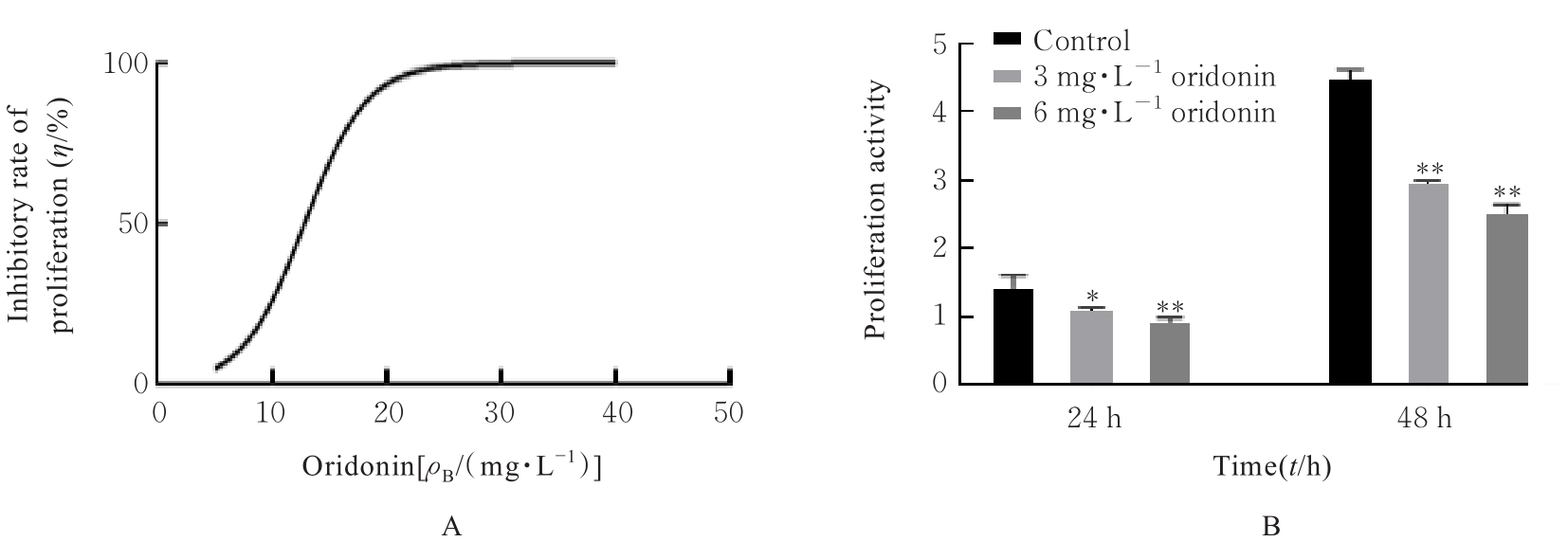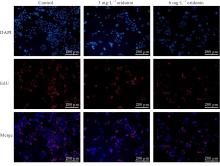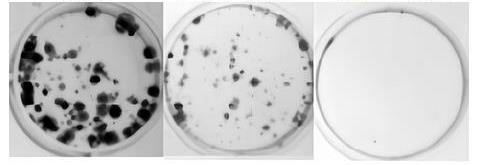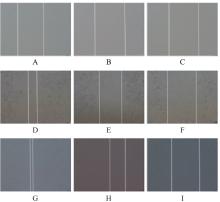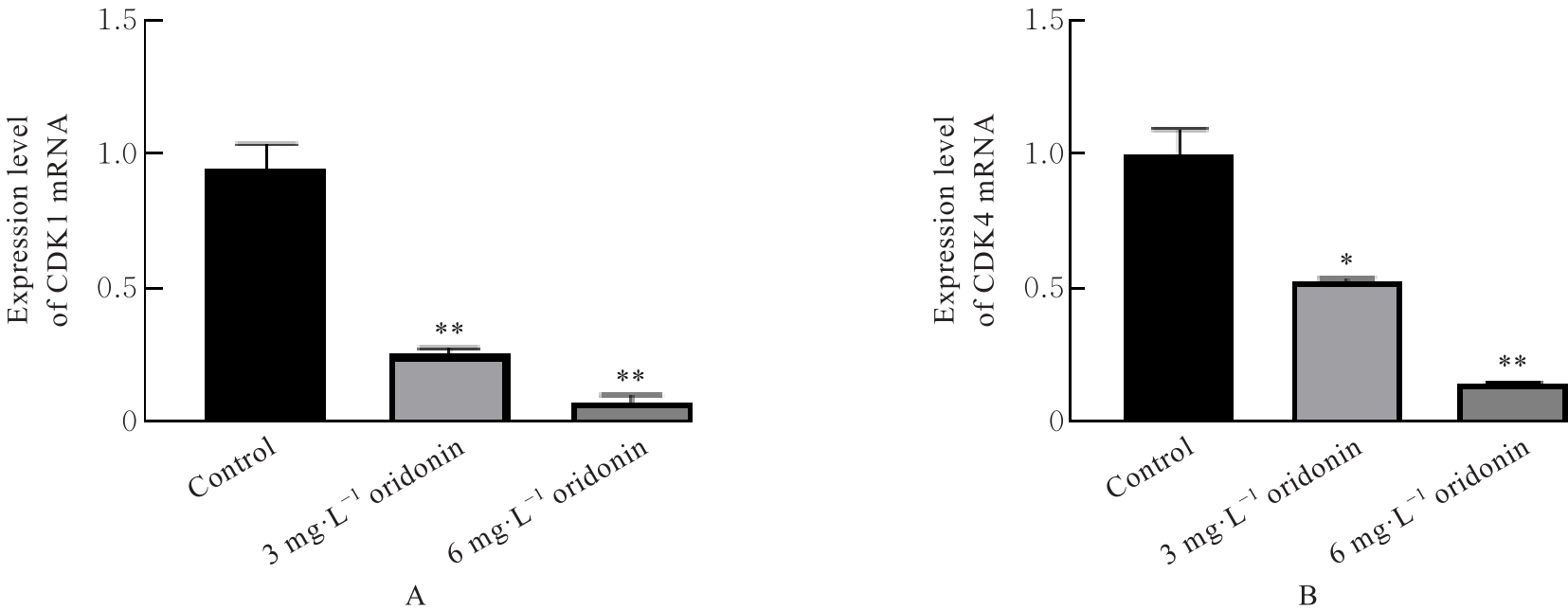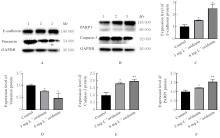Journal of Jilin University(Medicine Edition) ›› 2024, Vol. 50 ›› Issue (4): 917-924.doi: 10.13481/j.1671-587X.20240405
• Research in basic medicine • Previous Articles Next Articles
Effect of oridonin on cell proliferation, migration, and apoptosis of human nasopharynx carcinoma HONE-1 cells
Chao LIANG1,2,Juanjuan DAI2,Ning ZHOU3,Dandan WANG1,2,Jie ZHAO1,2,Di AN1,2,Yan WU1,2( )
)
- 1.Medical Research Center, Affiliated Hospital, Binzhou Medical University, Binzhou 256600, China
2.Department of Oncology, Affiliated Hospital, Binzhou Medical University, Binzhou 256600, China
3.Department of Otolaryngology Head and Neck Surgery, Affiliated Hospital, Binzhou Medical University, Binzhou 256600, China
-
Received:2023-09-05Online:2024-07-28Published:2024-08-01 -
Contact:Yan WU E-mail:wuyan55@126.com
CLC Number:
- R285.5
Cite this article
Chao LIANG,Juanjuan DAI,Ning ZHOU,Dandan WANG,Jie ZHAO,Di AN,Yan WU. Effect of oridonin on cell proliferation, migration, and apoptosis of human nasopharynx carcinoma HONE-1 cells[J].Journal of Jilin University(Medicine Edition), 2024, 50(4): 917-924.
share this article
| 1 | SUN L L, SONG J J, HUANG Q L. Clinicopathological and prognostic significance of p16 protein in nasopharynx cancer patients: a PRISMA-compliant meta-analysis [J]. Medicine (Baltimore), 2019, 98(11): e14602. |
| 2 | BAI R H, SUN J Z, XU Y, et al. Incidence and mortality trends of nasopharynx cancer from 1990 to 2019 in China: an age-period-cohort analysis[J]. BMC Public Health, 2022, 22(1): 1351. |
| 3 | MAHDAVIFAR N, GHONCHEH M, MOHAMMADIAN-HAFSHEJANI A, et al. Epidemiology and inequality in the incidence and mortality of nasopharynx cancer in Asia[J]. Osong Public Health Res Perspect, 2016, 7(6): 360-372. |
| 4 | LIU G S, ZHANG S M, MA Y Z, et al. Effects of error on dose of target region and organs at risk in treating nasopharynx cancer with intensity modulated radiation therapy[J]. Pak J Med Sci, 2016, 32(1): 95-100. |
| 5 | AN Y P, ZHU J, WANG X, et al. Oridonin delays aging through the AKT signaling pathway[J]. Front Pharmacol, 2022, 13: 888247. |
| 6 | LI C Y, ZHU Y H, WU Y Y, et al. Oridonin alleviates LPS-induced depression by inhibiting NLRP3 inflammasome via activation of autophagy[J]. Front Med, 2021, 8: 813047. |
| 7 | LI X, ZHANG C T, MA W, et al. Oridonin: a review of its pharmacology, pharmacokinetics and toxicity[J]. Front Pharmacol, 2021, 12: 645824. |
| 8 | LI D H, HAN T, LIAO J, et al. Oridonin, a promising ent-kaurane diterpenoid lead compound[J]. Int J Mol Sci, 2016, 17(9): 1395. |
| 9 | HONG M K, LIU H H, CHEN G H, et al. Oridonin alters hepatic urea cycle via gut microbiota and protects against acetaminophen-induced liver injury[J]. Oxid Med Cell Longev, 2021, 2021: 3259238. |
| 10 | PARK H, JEONG Y J, HAN N K, et al. Oridonin enhances radiation-induced cell death by promoting DNA damage in non-small cell lung cancer cells[J]. Int J Mol Sci, 2018, 19(8): 2378. |
| 11 | LI S R, SHI D, ZHANG L Y, et al. Oridonin enhances the radiosensitivity of lung cancer cells by upregulating Bax and downregulating Bcl-2[J]. Exp Ther Med, 2018, 16(6): 4859-4864. |
| 12 | LIU W, WANG X D, WANG L, et al. Oridonin represses epithelial-mesenchymal transition and angiogenesis of thyroid cancer via downregulating JAK2/STAT3 signaling[J]. Int J Med Sci, 2022, 19(6): 965-974. |
| 13 | LUO D D, YI Y J, PENG K, et al. Oridonin derivatives as potential anticancer drug candidates triggering apoptosis through mitochondrial pathway in the liver cancer cells[J]. Eur J Med Chem, 2019, 178: 365-379. |
| 14 | 何 静, 严如根, 金国钰, 等. 冬凌草甲素体内外抗卵巢癌活性及相关机制研究[J]. 郑州大学学报(医学版),2023, 58(4): 480-489. |
| 15 | TCHAKARSKA G, SOLA B. The double dealing of cyclin D1[J]. Cell Cycle, 2020, 19(2): 163-178. |
| 16 | CHEN N P, ARETZ J, FÄSSLER R. CDK1-cyclin-B1-induced kindlin degradation drives focal adhesion disassembly at mitotic entry[J]. Nat Cell Biol, 2022, 24(5): 723-736. |
| 17 | YIN Q Y, JIAN Y L, XU M, et al. CDK4/6 regulate lysosome biogenesis through TFEB/TFE3[J]. J Cell Biol, 2020, 219(8): e201911036. |
| 18 | SINGH M, YELLE N, VENUGOPAL C, et al. EMT: mechanisms and therapeutic implications[J]. Pharmacol Ther, 2018, 182: 80-94. |
| 19 | SOMMARIVA M, GAGLIANO N. E-cadherin in pancreatic ductal adenocarcinoma: a multifaceted actor during EMT[J]. Cells, 2020, 9(4): 1040. |
| 20 | HASHEMI M, ARANI H Z, OROUEI S, et al. EMT mechanism in breast cancer metastasis and drug resistance: Revisiting molecular interactions and biological functions[J]. Biomed Pharmacother, 2022, 155: 113774. |
| 21 | BRABLETZ S, SCHUHWERK H, BRABLETZ T, et al. Dynamic EMT: a multi-tool for tumor progression[J]. EMBO J, 2021, 40(18): e108647. |
| 22 | ESKANDARI E, EAVES C J. Paradoxical roles of caspase-3 in regulating cell survival, proliferation, and tumorigenesis[J]. J Cell Biol, 2022, 221(6): e202201159. |
| 23 | ARRURI V K, GUNDU C, KHAN I, et al. PARP overactivation in neurological disorders[J]. Mol Biol Rep, 2021, 48(3): 2833-2841. |
| 24 | WANG Y, LUO W, WANG Y. PARP-1 and its associated nucleases in DNA damage response[J]. DNA Repair (Amst), 2019, 81: 102651. |
| [1] | Yongjing YANG,Tianyang KE,Shixin LIU,Xue WANG,Dequan XU,Tingting LIU,Ling ZHAO. Synergistic sensitization of apatinib mesylate and radiotherapy on hepatocarcinoma cells invitro [J]. Journal of Jilin University(Medicine Edition), 2024, 50(4): 1009-1015. |
| [2] | Guoxing YU,Xin ZHANG,Hengwei DU,Bingjie CUI,Na GAO,Cuilan LIU,Jing DU. Effect of urolithin C on proliferation, apoptosis and autophagy of human acute myeloid leukemia HL-60 cells and its mechanism [J]. Journal of Jilin University(Medicine Edition), 2024, 50(4): 908-916. |
| [3] | Shilei GAO,Jiaqiang WANG,Weitao YAO,Zhichao TIAN,Chao LI,Xiaoxiao LIANG,Xin WANG. Effect of miR-761 on epithelial-mesenchymal transition in osteosarcoma MG63 cells by regulating tumor-associated macrophage polarization [J]. Journal of Jilin University(Medicine Edition), 2024, 50(4): 978-988. |
| [4] | Tengfei WANG, Feng CHEN, Ling QI, Ting LEI, Meihui SONG. Inhibitory effect of D-limonene on proliferation of glioblastoma cells and its mechanism [J]. Journal of Jilin University(Medicine Edition), 2024, 50(3): 647-657. |
| [5] | Jiacai FU,Lingsha QING,Lu YANG,Meihui SONG,Xianying ZHANG,Xiaocui LIU,Fengjin LI,Ling QI. Inhibitory effect of Schisandrin B on proliferation of pancreatic cancer Pan02 cells and its mechanism [J]. Journal of Jilin University(Medicine Edition), 2024, 50(3): 638-646. |
| [6] | Lin CHEN,Limin YAN,Huaijie XING,Min CHEN,Xiaoyan LI,Chaosheng ZENG. Improvement effect of Xuebijing on brain tissue injury and Th17/Treg immune imbalance in cerebrospinal fluid in NMDA receptor encephalitis model mice [J]. Journal of Jilin University(Medicine Edition), 2024, 50(3): 697-707. |
| [7] | Haifeng WEI,Zhiqiang NI,Yanhong WEI,Qilai WANG,Shouqing LI,Yinfu MA,Yan TAN,Yanqiu FANG. Effects of miR-126 over-expression and ADAM9 gene silencing on biological behavior of gastric cancer SGC-7901 cells and their mechanisms [J]. Journal of Jilin University(Medicine Edition), 2024, 50(2): 310-319. |
| [8] | Buqi NA,Chunji QUAN,Fang ZHAO,Fan YANG,Ru XIAO,Xuemei JIN,Zhenling LI. Effect of histone deacetylase inhibitor CUDC-101 on DNA damage, migration, and epithelial-mesenchymal transition of prostate cancer DU145 cells [J]. Journal of Jilin University(Medicine Edition), 2024, 50(2): 400-410. |
| [9] | Linru WANG,Jing ZHANG,Dongchan ZHAO,Jinjun WANG,Wenxian HU. Effect of silencing FOXO1 gene on autophagy and apoptosis of human aortic vascular smooth muscle cells [J]. Journal of Jilin University(Medicine Edition), 2024, 50(2): 431-441. |
| [10] | Donghong CAI,Qing LI,Lingling KE,Huiya ZHONG,Qilong JIANG,Han ZHANG,Yafang SONG. Expression of mitophagy and apoptosis related genes in peripheral blood mononuclear cells of patients with myasthenia gravis and its clinical diagnosis value [J]. Journal of Jilin University(Medicine Edition), 2024, 50(2): 481-488. |
| [11] | Huijuan SONG,Zhenhua XU,Dongning HE. Effect of apolipoprotein C1 expression on proliferation and apoptosis of human liver cancer HepG2 cells and its mechanism [J]. Journal of Jilin University(Medicine Edition), 2024, 50(1): 128-135. |
| [12] | Yanhong WEI,Chenxue YANG,Guangmin YANG,Shuai SONG,Ming LI,Haijiao YANG,Haifeng WEI. Inhibitory effect of downregulating HMGB2 expression on epithelial-mesenchymal transition of liver cancer LM3 cells and its AKT/mTOR signaling pathway mechanism [J]. Journal of Jilin University(Medicine Edition), 2024, 50(1): 143-149. |
| [13] | Yaxin LIU,Jian LIU,Zhen LI,Zhanhong CAO,Haonan BAI,Yu AN,Xingyu FANG,Qing YANG,Hui LI,Na LI. Inhibitory effect of royal jelly acid on proliferation of human colon cancer SW620 cells and its network pharmacological analysis [J]. Journal of Jilin University(Medicine Edition), 2024, 50(1): 150-160. |
| [14] | Jia ZHOU,Zhidong QIU,Zhe LIN,Guangfu LYU,Jiaming XU,He LIN,Kexin WANG,Yuchen WANG,Xiaowei HUANG. Effect of chelerythrine on migration, invasion, and epithelial-mesenchymal transition of human ovarian cancer SKOV3 cells [J]. Journal of Jilin University(Medicine Edition), 2024, 50(1): 25-32. |
| [15] | Yan WANG,Xiaohui LI,Yao JI,Lili CUI,Yujie CAI. Differential effects of APOE polymorphism in neurotoxicity-responsive astrocytes induced by inflammatory factor [J]. Journal of Jilin University(Medicine Edition), 2024, 50(1): 33-41. |
|

